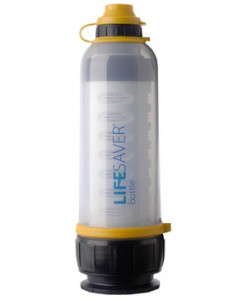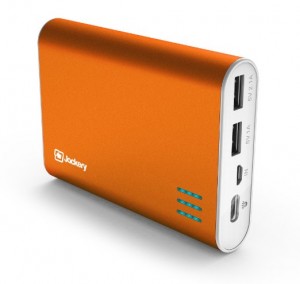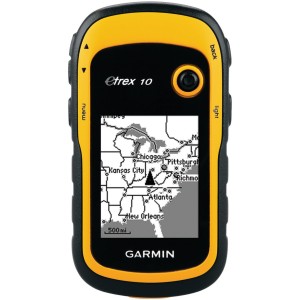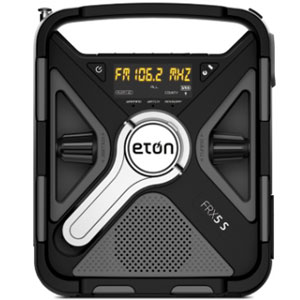Be prepared. The Boy Scouts have been telling us this for years. In the next series of posts, we’re going to help you do just that. These days, a great many things are out of our control, primarily the weather but also certain other incidents have forced us to be concerned about local or regional disasters that might occur. Just so you understand, we’re not talking about the survivalist mentality here, just tips that you should consider…just in case.
We’re going to present different scenarios, some of which have already occurred in different parts of the world. None of them are so far-fetched that they are beyond the realm of possibility, even though they may only have a remote chance of happening to you. If you travel around the world on a regular basis, however, you might want to take note of some of our tips.
Before we begin, please note that we not affiliated in any way with any of the products listed here. Do not take our product mentions as recommendations. We are showing you types of products, not brands that we endorse.
Hi-tech/Tech Stuff You Might Need
1. These items are listed in no order of importance…except the first one. Wherever you are, whatever happens, you cannot live without water. Although science will serve up varying times that humans can live without water, differing from three days up to around eight days, you will die from lack of H2O far quicker than you will die from lack of food. Additionally, without water to sustain you, the search for food will become much more difficult.
This product, the Lifesaver 4000UF Bottle, seems to fill the bill when you are faced with making your own potable water. It’s not cheap, we’ve never seen them under $100.00 but that’s a small price to pay for your own life and the lives of your relatives/friends. Here’s a link to the company site: Livesaver Systems. This is how it looks:

This product is handy if you are backpacking or biking near where you live or out in the boonies in a foreign country. Finding water is not all that difficult. Finding potable drinking water is. Strap this on your pack and you’ll never be thirsty.
2. Your cell phone’s battery can only last a few days, if you have kept it fully charged that is. Assuming that you’re in an extended situation where you absolutely need contact with the outside world, you need what’s known as an external rechargeable battery. For about $50.00, you can pick up something like this:

In natural disasters, electricity is often the first thing to be affected. During the ice storm’s aftermath here in Toronto last December, any shopping mall that had electricity was a mecca for people who needed to charge their phones. The product shown above has a 12,000mAh capacity, good enough for at least four charges on a normal smartphone. It’s not light, mind you, but it holds its charge for a very long time. Why is that important? Because it means you can charge it when your power is on, let’s say every six months, then pop it in a drawer for use when disaster hits. There are smaller units, of course, some that fit easily in your pocket for a quick charge when you’re out for the day. Large or small, these are perfect for gifts. Think about keeping one in your car. Note: Some of the chargers double as a flashlight. Look for one that does more than one thing.
3. Where in the world are you? Yes, your smartphone might have GPS but if there is no cell service or WiFi, how will you know where you are. Knowing where you are means you can communicate your location to anyone who might be looking for you. Whether you’re in the middle of an ocean or a rain forest, you need a dedicated handheld GPS unit to know where you are and/or to find your way back to safety. There are several big names in this area, Garmin and Magellan are popular, plus smaller, perhaps less reliable names that do more or less the same thing. Regardless, most of the units are priced less than a good pair of track shoes. If you’re an adventurer, there’s no reason not to have one. Here’s a shot of a Garmin GPS from Amazon that sells for around $100.00:

A compass can tell you which direction is which, of course, so keeping one of these in your travel pack is good too. Whatever you decide to carry with you, make sure you know how it works. A compass isn’t quite as simple to use as it seems, specially when you are scared and alone in the woods or in an empty, unknown city. Keep in mind that a compass made for the northern hemisphere might not work in the southern half of the globe. Why? Because a compass needle is weighted on the south end, for us northerners, or on the north end, for people south of the equator. Read up on it, it’s very interesting.
4. If there is no electricity, how will you know what’s going on? In natural disasters such as ice storms, hurricanes or tornadoes, even radio stations can be affected. What broadcast system isn’t? Something called shortwave radio. Besides being fun, shortwave radios can be a link to the outside world when you’re trapped or isolated from the rest of the world. The fun part is being able to listen to broadcasts from other countries, often in languages you don’t understand. The reassuring part of shortwave comes from the fact that it does not require anything more than a source of power, think batteries, and an antenna. Look around your neighborhood and you just might see one or two houses with a very tall, straight antenna. This signifies that someone in the house is a ham radio operator. The antenna sends out a signal that can be picked up thousands of miles away, unaffected by the curvature of the earth. Radios that can receive shortwave broadcasts are relatively cheap, almost always under $100.00, can have multiple power supplies; solar, lithium, crank or alkaline battery, and almost always receive AM/FM bands too. Your local government broadcasts on an emergency band during extreme civil emergencies. You can check out what band they use or simply pick up a radio that receives them all. Here’s a unit from our local electronics chain, one that has four power sources:

That’s it for this post. We hope this series gets you thinking about things like, “What if?” What if we had to evacuate our home in an hour? What if there is a flood? What if there is a devastating hurricane tomorrow? All of these situations have occurred recently, not in some far corner of the Third World but right here in North America. Some of you may have experienced the type of thing we’re writing about. We’d love to hear from you if that’s the case. If we haven’t mentioned something that you think is important by the end of the series, please let us know in a comment below. Alternatively, you could simply Like our Facebook page and make a comment there. Here is the link: Computers Made Simple on Facebook
Thanks for reading!
